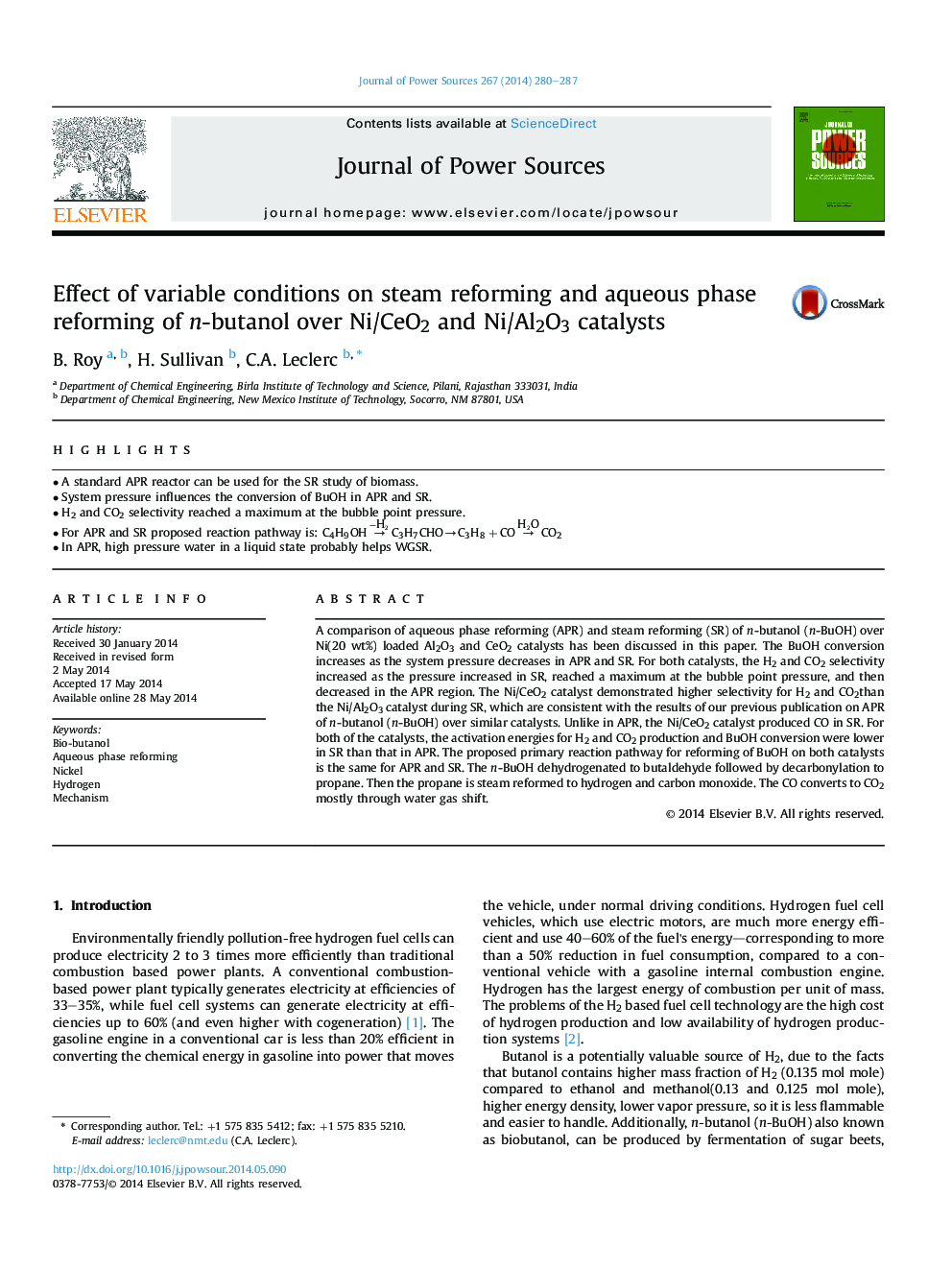| Article ID | Journal | Published Year | Pages | File Type |
|---|---|---|---|---|
| 1286607 | Journal of Power Sources | 2014 | 8 Pages |
•A standard APR reactor can be used for the SR study of biomass.•System pressure influences the conversion of BuOH in APR and SR.•H2 and CO2 selectivity reached a maximum at the bubble point pressure.•For APR and SR proposed reaction pathway is: C4H9OH→–H2C3H7CHO→C3H8+CO→H2OCO2•In APR, high pressure water in a liquid state probably helps WGSR.
A comparison of aqueous phase reforming (APR) and steam reforming (SR) of n-butanol (n-BuOH) over Ni(20 wt%) loaded Al2O3 and CeO2 catalysts has been discussed in this paper. The BuOH conversion increases as the system pressure decreases in APR and SR. For both catalysts, the H2 and CO2 selectivity increased as the pressure increased in SR, reached a maximum at the bubble point pressure, and then decreased in the APR region. The Ni/CeO2 catalyst demonstrated higher selectivity for H2 and CO2than the Ni/Al2O3 catalyst during SR, which are consistent with the results of our previous publication on APR of n-butanol (n-BuOH) over similar catalysts. Unlike in APR, the Ni/CeO2 catalyst produced CO in SR. For both of the catalysts, the activation energies for H2 and CO2 production and BuOH conversion were lower in SR than that in APR. The proposed primary reaction pathway for reforming of BuOH on both catalysts is the same for APR and SR. The n-BuOH dehydrogenated to butaldehyde followed by decarbonylation to propane. Then the propane is steam reformed to hydrogen and carbon monoxide. The CO converts to CO2 mostly through water gas shift.
